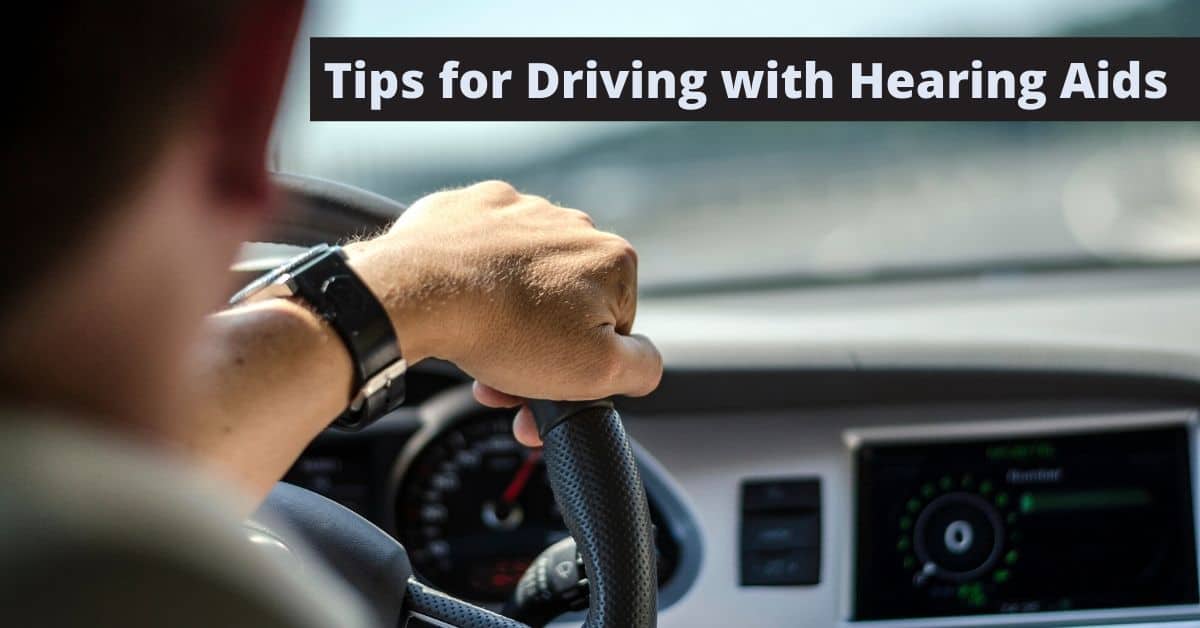- Strategies for Coping with Single-Sided Deafness - July 15, 2024
- How Summer Humidity Affects Hearing Aid Performance - July 3, 2024
- The Power of Body Language: Enhancing Communication for Those with Hearing Loss - June 28, 2024
With 227.5 million drivers on the road in America today, it’s more important than ever to exercise caution behind the wheel. If you have hearing loss, getting hearing aids is a great thing to do to make you a safer driver (not to mention the many other areas of life they help improve), but there are still some things to be aware of when you get behind the wheel.
Get Used to Your Hearing Aids
Hearing aids are not a simple “quick fix” for hearing loss. You might have friends who got hearing aids and never use them because they’re “worse than not being able to hear.” Hearing aids require an adjustment period. As hearing aids today can be fitted (programmed) to accommodate an individual’s specific needs, you need to make it clear what your needs are. If there’s something that’s not working right for you, don’t give up on your hearing aids but instead work with your hearing healthcare provider to get the most out of your hearing aids. Most people who get hearing aids report being satisfied with them, but they do take a while to get used to. It’s probably not the best idea to get behind the wheel until you get acquainted and comfortable with the world as it is presented through your hearing aids.
Keep Your Sight Lines Clear
It’s always important to see as well as possible, and never more so than when our hearing isn’t perfect. Get regular eye exams and make sure your prescription is fully up to date. Keep a microfiber cloth in the car so you can wipe your glasses lenses clean each time before you drive. Keep electronic map devices close to your line of sight so you don’t need to look far from the road to see them, but don’t have them blocking your view of other motorists or pedestrians. Make sure your windshield wipers are in good shape! If you’re driving in the rain, it will be harder to see as well as hear what is going on outside the car.
When you’re buying or renting a car, check to make sure the pillars of the car (the opaque braces that hold the roof onto the body) aren’t extraordinarily wide. You might also get a wide-angle rear view mirror. These mirrors clip over the existing rear view mirror in the car to expand your view of what’s behind and around you. Use common sense and set yourself up to have the clearest vision with the fewest distractions whenever you drive.
Lean On Technology
Do your hearing aids have Bluetooth capability? Depending how new your car is, it might have optional technology that integrates with hearing aids, or alerts you when an emergency vehicle is nearby. Your map device, whether a built-in GPS or an app on your cell phone, can broadcast directions to your hearing aids, keeping your eyes free for the road ahead.
Your hearing aids might also have the option to use a remote microphone. This is useful if you are carrying on a conversation with a passenger. If you use lip-reading at all to compensate for your hearing loss, doing so while driving is a big risk. With an accessory microphone, your passenger can speak clearly and directly into the device so you can keep your eyes ahead.
Keep Non-Essential Sounds Low
While it may seem like rolling the windows down ought to help you hear what is outside the car, the increased sound of air rushing through the window will actually decrease your ability to hear other traffic. Keep windows closed and keep the radio low.
Keep Your Car In Good Shape
Worn out mufflers, rattling heat guards, squealing brakes, bad door seals: these and other mechanical problems with your car, while they may not prevent the car from being drivable, create sounds that can mask or distract from the sounds you need to hear to stay safe on the road.
Don’t Drive Too Long
Hearing aids can help minimize the fatigue associated with hearing loss, but stay aware of your energy level. Even with hearing aids, if you’re splitting your attention between driving and conversation, you might not want to put in a full 8 hours at the wheel. Let someone else drive or take a break if you’re feeling tired.

